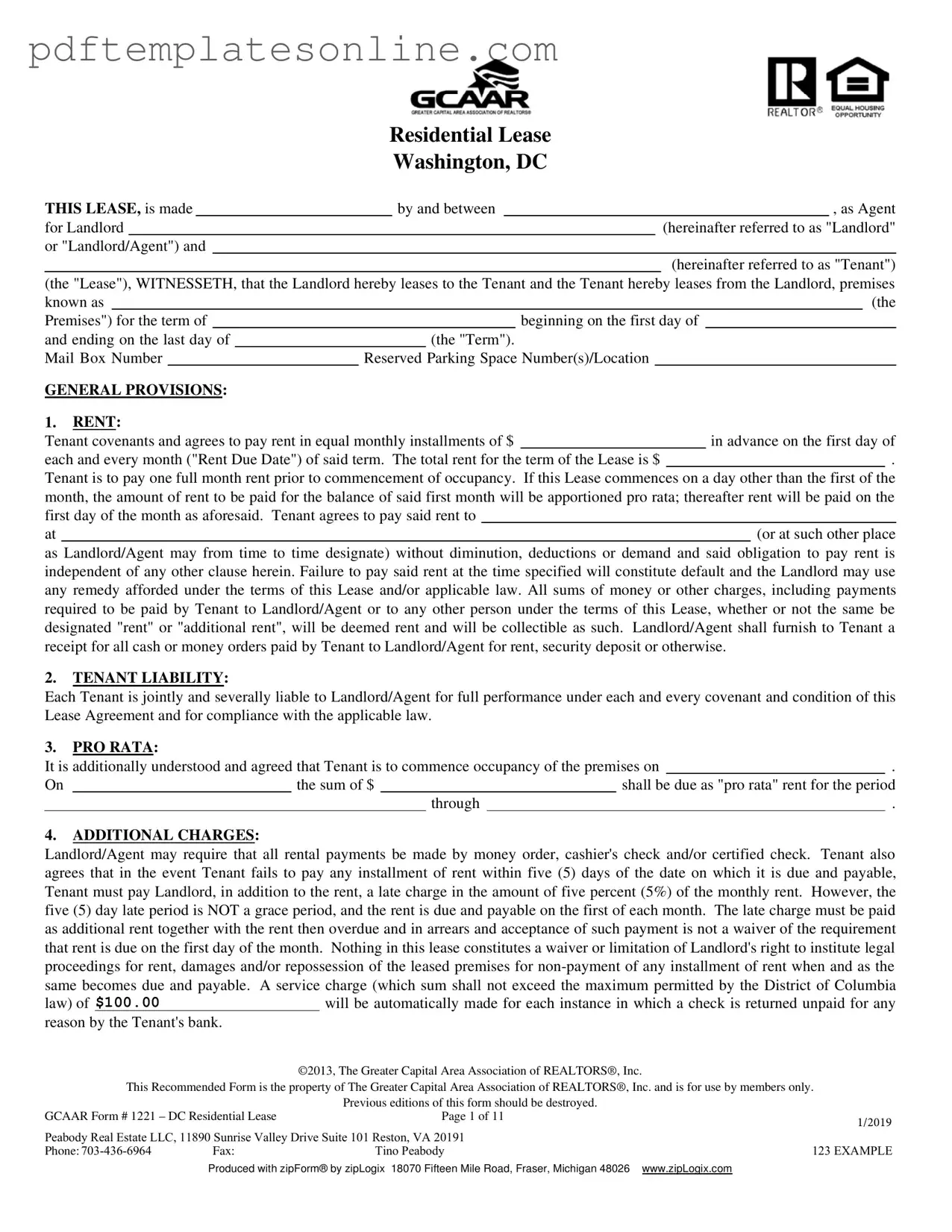Blank Washington Dc Residential Lease Agreement Form
The Washington DC Residential Lease Agreement is a legal document that outlines the terms and conditions between a landlord and a tenant for renting a residential property in Washington, D.C. This agreement specifies important details such as the duration of the lease, rental payments, and the responsibilities of both parties. Understanding this form is essential for ensuring a smooth rental experience and protecting the rights of both landlords and tenants.
Access Washington Dc Residential Lease Agreement Editor Now
